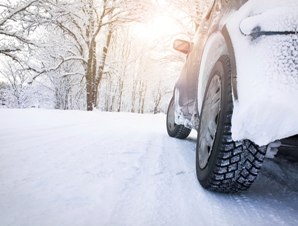This is the second of three in a series of stories about “refriger-nation.”
It’s a driver’s worst nightmare – a sudden snowstorm hits, a deer darts into the road and, when you brake, your worn tires send you skidding. While you can’t control the weather or wildlife, you can prepare your vehicle for winter.
 ©iStock.com/AGrigorjeva While you can’t control the weather or wildlife, you can prepare your vehicle for winter. |
“Vehicle maintenance is critical and needs to be done regularly, especially in severe winter,” says John Laudenslager, president, vehicle protection services, at Assurant Solutions. “We help people protect the things that matter most, and nothing is more important than your life and those of your passengers.”
Even if your vehicle is serviced regularly, the National Safety Council (NSC) advises drivers to take these pre-winter precautions:
- Keep a fully-charged cell phone with you
- Test antifreeze, battery strength, brakes, ignition system, lights and emergency flashers
- Check oil as well as radiator, brake and power steering fluid
- Use a windshield cleaner with de-icer and make sure your heater and defroster work
- Check air pressure in tires (including the spare) and replace worn ones
- Keep wheels properly aligned
With such bitter cold and above-average snowfall predicted this season that the Old Farmers Almanac is calling it “Refriger-nation,” drivers can’t afford to become stranded. The NSC recommends keeping gas tanks nearly full to avoid running out of fuel in slow-moving traffic.
If you do become stranded, don’t leave your vehicle unless you know help is close by. Instead, stay put and:
- Place flares at a safe distance at each end of your vehicle
- Hang a colorful cloth from the antenna
- Keep the exhaust clear, and run the engine and heater about 10 minutes per hour to keep warm. Monitor the amount of gas in the tank
- Pile on blankets and clothes to stay warm
- Keep a window cracked so snow and ice don’t seal your vehicle shut
To ensure you’ll have necessary supplies to wait safely until help arrives, Ready.gov recommends filling an emergency kit with:
- A working flashlight and extra batteries (check these regularly)
- Flares
- First-aid kit
- Tow and tire chains, jumper cables and a toolkit
- Blanket and extra hats, scarves and gloves
- Florescent distress flag
- Salt, sand or non-clumping kitty litter for traction
- Compass
- Ice scraper, snow brush and shovel
- Wooden matches (in a waterproof container)
- Bottled water and non-perishable foods like unsalted canned nuts and hard candy
For more tips to survive “Refriger-nation,” visit Ready.gov.

